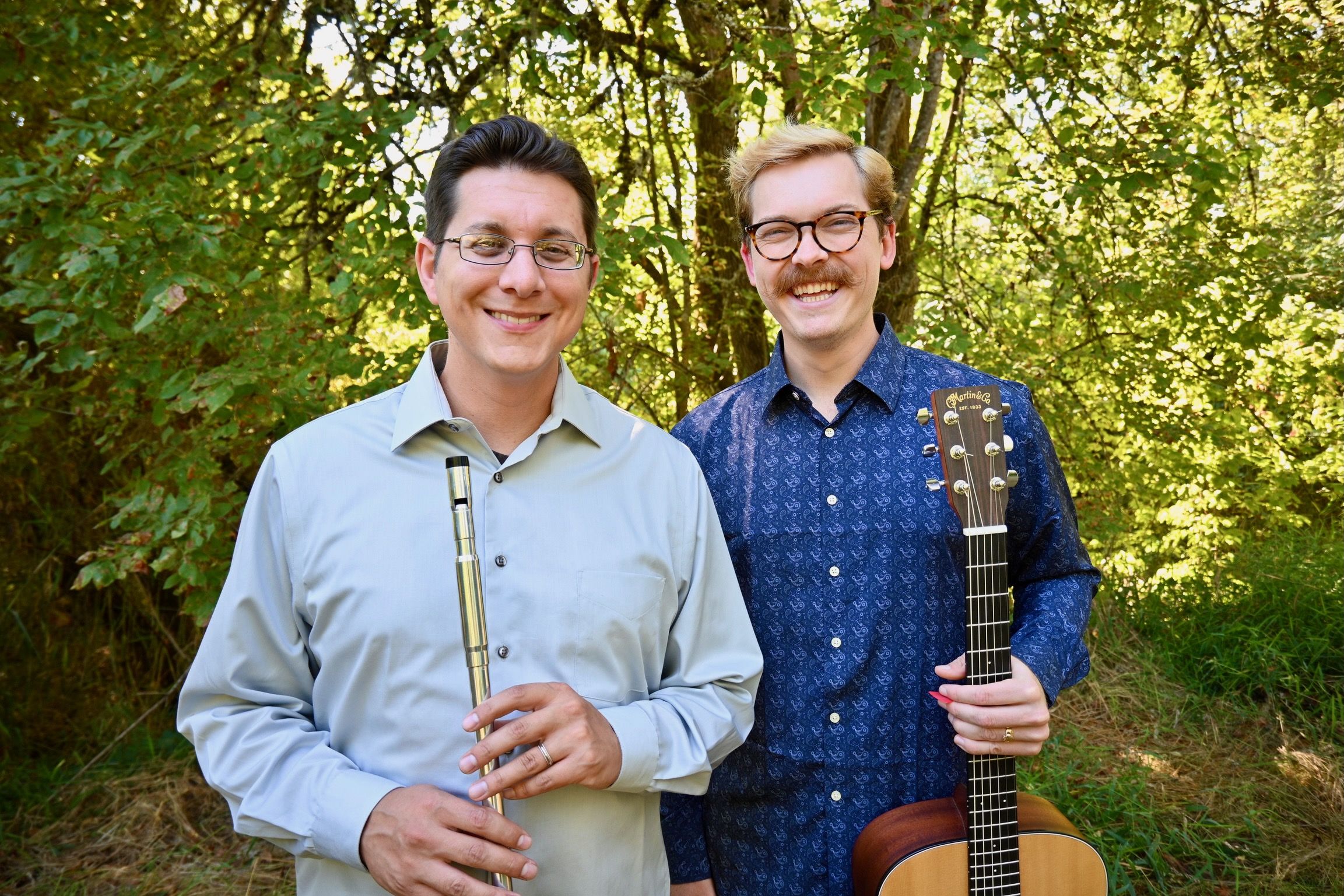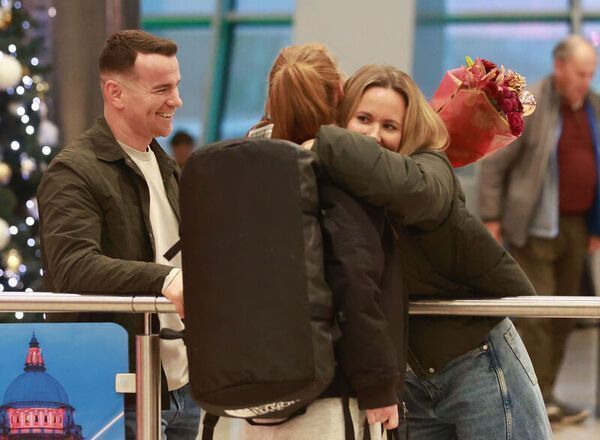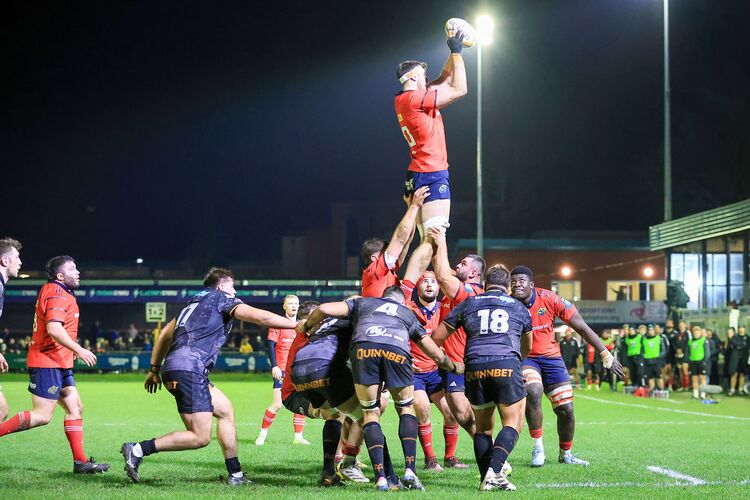A few things to talk about this week! First up is the Irish Arts Center’s recent announcement of their fall term. It kicks off the week of Sept. 19 and in addition to classes in dance, theater, language, and a variety of options for children, they’re offering instruction on the harp, concertina, fiddle, guitar, mandolin, tin whistle, and general music theory. These classes look very interesting indeed and should appeal to folks who’ve been bitten by the traditional music bug. (And do keep in mind that IAC runs a monthly Friday session in their Café; upcoming dates are Sept. 22, Oct 27, Nov. 17 and Dec. 15.) Visit here for more information.
Hey, speaking of education, Paul Keating’s announced July 14-20 as the dates for Catskills Irish Arts Week 2024. Mark your calendars for the premiere Irish music teaching week because it’ll be a great time – see you there!
In the media player this week we have “Breathe Blue” by Eliot Grasso and Adam Hendey. Featuring tin whistle and guitar (with a song thrown in for good measure), this album is built around dialogue between instruments and features players that will attract traditional music listeners who love nuance, exchange and a more delicate sounding expression of the tradition.
Grasso (eliotgrasso.com), who has a PhD in musicology and currently serves as Vice President of Gutenberg College in Eugene, Ore., is an accomplished musician and features on whistle here. Perhaps best known as a skilled uilleann piper, he’s a very accomplished performer with several recordings under his belt, including “Standing Room Only” (2004), “Up Against The Flatirons” (2007, Na Píobairí Uilleann), “North by NorthWest” (2020, with Dave Grasso), and as a member of the band Dréos, whose album “The Clearing” I wrote about back in 2015. Among the places he’s performed include the National Heritage Award ceremony, on National Public Radio for “A Prairie Home Companion” with Garrison Keillor, and for RTE’s Irish traditional music program “The Rolling Wave.”
Although more of a newcomer, Hendey (adamhendey.com) has interesting credentials. A multi-instrumentalist (who plays guitar and bass here), vocalist, and composer living in Boston, he studied traditional music in the master’s degree at Royal Conservatoire of Scotland and is a graduate of the Robert D. Clark Honors College at the University of Oregon.
As I suggested above, musical dialogue is at this album’s heart and is in fact the subject of its liner notes. They tell us that for the two musicians “[…] each tune becomes a musical microcosm about which much could be said, and also ripe for instrumental discussion with inherent potential for variation that complements the character of the tune.” It continues, revealing that their goal “was to find out what it would be like to handle a small collection of tunes each like a tiny universe, expanding with potential. We asked ourselves: what would it sound like to be careful with each tune and explore the distinctive range, contour, key, and phrasing of each?”
The ways they’ve answered this question are compelling. On the one hand, there are the tracks that have a sort of traditional “melody instrument/accompanist” feel. I think of “Return From Fingal” and “Morning Dew” here in particular because they feel familiar and warm in their arrangements. The whistle plays the melody while the guitar creates a backing in which the whistle finds a comfortable nest. But within this there’s considerable invention, especially in the accompaniment, and some beautiful little touches in how the melody is expressed that demonstrate the care with which these musicians approached the music for this album.
Then there are other tracks like “Paddy Fahy’s No. 14” and “Promenade,” where I feel the interplay between the two instruments is a little different, slightly more intimate, and perhaps in even stronger dialogue. I think this is especially the case with “Fahy’s,” where whistle and guitar play in unison and progress along a few different melody-inspired textures that I find reminiscent of things Hayes & Cahill (who are referenced in the album’s liner notes) did in their work. With the latter, Hendey does adopt the “backer’s” role (as outlined above), but it seems he’s given it a twist: his approach to rhythm and harmony appears to keep a keen ear on his instrument’s relationship to the melody. His percussive handling of the chords give Grasso’s melodic whistle playing a more defined outline. (I also get this sense with “The Rolling Wave,” a terrific track.) It’s dialogue in action.
The album’s sole song, “John of Dreams,” is one of its standouts. Hendey’s voice is well suited for it and he seems to sing the song with an appreciation of its lyrical depth that conveys a sort of cathartic direction. (I even think there’s a point in the song at the 4.23 mark where it sounds like Hendey breaks out into an appropriately placed huge smile – have a listen, see if you can hear it, too.)
“Breathe Blue” is a very fine album from two gifted players. Grasso and Hendy clearly play on the same wavelength – their work together is refined and meticulous and the great thought put into the arrangements is readily apparent from first listen. There is superb chemistry in their shared vision for the music they wanted to make here and I think its something listeners will enjoy. Check it out! To learn more and buy the album, visit here.







